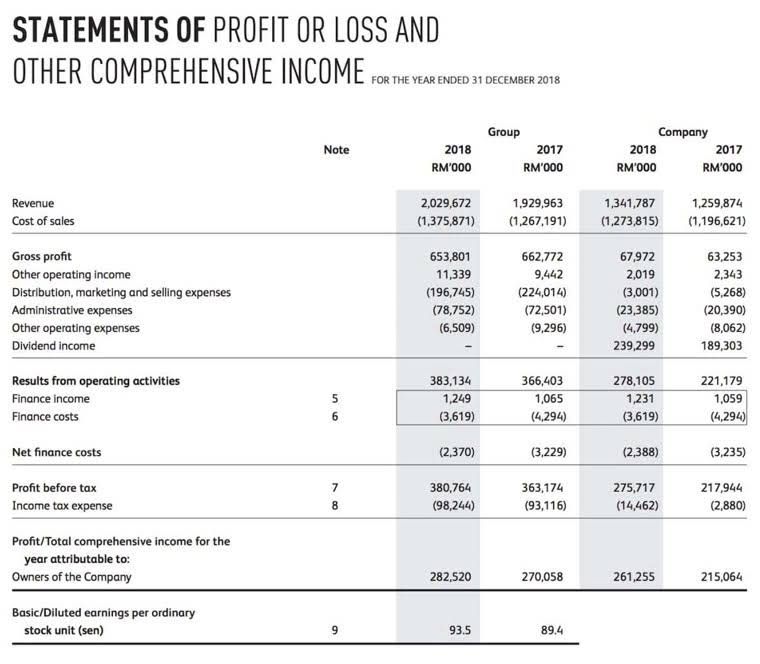
If you’ve prepared this statement before, you’ll carry over the last period’s beginning balance. If this is your first statement of retained earnings, your starting balance is zero. The beginning equity balance is always listed on its own line followed by any adjustments that are made to retained earnings for prior period errors. These adjustments could be caused by improper accounting methods used, poor estimates, or even fraud. In other words, assume a company makes money (has net income) for the year and only distributes half of the profits to its shareholders as a distribution. The other half of the profits are considered retained earnings because this is the amount of earnings the company kept or retained.
From the profit it earned during a year, it had a dual obligation to both the preferred and the equity shareholders, bringing down the amount that could have been retained. Companies must rectify any items erroneously passed in the previous year as prior period adjustments in the current year. Generally speaking, a company with a negative retained earnings balance would statement of retained earnings example signal weakness because it indicates that the company has experienced losses in one or more previous years. However, it is more difficult to interpret a company with high retained earnings. Over the same duration, its stock price rose by $84 ($112 – $28) per share. Strong financial and accounting acumen is required when assessing the financial potential of a company.
Example of the Statement of Retained Earnings
Retained earnings can be used in a variety of ways, such as paying dividends to shareholders or reinvesting earnings back into the business. By looking at the example retained earnings, shareholders can get a sense of how profitable a company has been and how retained earnings can help business owners in the future. Let’s say a company, ABC Inc., starts its accounting period with a beginning retained earnings balance of $50,000. During the period, ABC Inc. generates a net income of $30,000 and pays out $10,000 in dividends to its shareholders. For example, if a company has negative retained earnings, it means the company has incurred losses in the past that have not been recovered through profits. On the other hand, a company with higher retained earnings may be seen as financially stable and able to reinvest in the business or pay out dividends to shareholders.
- For example, a technology-based business may have higher asset development needs than a simple t-shirt manufacturer, as a result of the differences in the emphasis on new product development.
- Consider a company with a beginning retained earnings balance of $100,000.
- That amount is added to the original $100,000 for a new total retained earnings of $130,000.
- The content on this website is provided “as is;” no representations are made that the content is error-free.
- This line item reports the net value of the company—how much your company is worth if you decide to liquidate all your assets.
- During the accounting period, the company generates a net income of $50,000 and pays cash dividends of $20,000, leaving it with $30,000 of its net income remaining.
The retained earnings are recorded under the shareholder’s equity section on the balance as on a specific date. Thus, retained earnings appearing on the balance sheet are the profits of the business that remain after distributing dividends since its inception. The beginning period retained earnings appear on the previous year’s balance sheet under the shareholder’s equity section. The beginning period retained earnings are thus the retained earnings of the previous year. Say, if the company had a total of 100,000 outstanding shares prior to the stock dividend, it now has 110,000 (100,000 + 0.10×100,000) outstanding shares.
Adding Net Income and Deducting Dividends Paid
The statement is a financial document that includes information regarding a firm’s retained earnings, along with the net income and amounts distributed to stockholders in the form of dividends. An organization’s net income is noted, showing the amount that will be set aside to handle certain obligations outside of shareholder dividend payments, as well as any amount directed to cover any losses. Each statement covers a specified time period, as noted in the statement. Retained Earnings are reported on the balance sheet under the shareholder’s equity section at the end of each accounting period. To calculate RE, the beginning RE balance is added to the net income or reduced by a net loss and then dividend payouts are subtracted. A summary report called a statement of retained earnings is also maintained, outlining the changes in RE for a specific period.
Management and shareholders may want the company to retain earnings for several different reasons. When lenders and investors evaluate a business, they often look beyond monthly net profit figures and focus on retained earnings. This is because retained earnings provide a more comprehensive overview of the company’s financial stability and long-term growth potential. If your company has a dividend policy and you paid out dividends in that accounting period, subtract that number from net income. This ending retained earnings balance can then be used for preparing the statement of shareholder’s equity and the balance sheet. Your bookkeeper or accountant may also be able to create monthly retained earnings statements for you.
